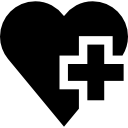Heart attack: Causes, Symptoms and Management

- Heart Attack
- 16 Aug 2023
Overview
What is Heart attack?
Myocardial infarction, another name for a heart attack, is a dangerous medical disorder that develops when one or more coronary arteries, which carry blood to the heart muscle, get blocked.
Every year, millions of individuals are impacted by this devastating medical disease. It can hit abruptly and without warning and is a top cause of mortality globally.
We will dive into the causes, risk factors, symptoms, and treatments of heart attacks in greater detail in this section.

Symptoms
What are the symptoms?
The common warning signs and symptoms, though they may vary from person to person, include chest discomfort or agony
Chest pain
- The most common heart attack symptoms are chest pressure, tightness, or squeezing. The discomfort might linger for a while or come and go.
Breathing difficulty
- This can happen before or after chest pain, and it may feel like you are having trouble breathing or are about to suffocate.
Nausea or diarrhea
- A heart attack might cause nausea or vomiting in certain persons.
Sweating
- Even if you are not physically exerting yourself, you could start to sweat.
Unsteadiness or faintness
- You may be lightheaded or dizzy, or you might faint.
Various upper body pain or discomfort
- The back, neck, jaw, or stomach may be painful or uncomfortable, as well as one or both arms.
- Chest discomfort, breathing problems, and other common symptoms are more prevalent in men. Women, on the other hand, could suffer some of these well-known yet subtle symptoms.1Symptoms| Researched based study from Nlm.nih.gov
Fatigue
- Women may feel more exhausted than usual even if they haven’t been engaging in any physically demanding activities.
Bloating or nausea
- They could feel queasy or indigestion, which might be misconstrued as gastrointestinal problems.1Symptoms| Researched based study from Nlm.nih.gov
Causes
What are the possible causes?
Coronary artery disease
- The most common cause of a heart attack is this. It happens when artery plaque thickens, limiting blood flow and raising the risk.
Elevated blood pressure
- It increases risk and, over time, is also referred to as hypertension, can harm the arteries.
Having a high cholesterol
- High levels of LDL, or “bad” cholesterol, raise the risk by promoting the growth of arterial plaque.
Smoking
- It can worsen the condition of the artery lining and raise the risk.
Diabetes
- Harming the blood vessel and raising the possibility of plaque development can increase the risk of a heart attack.
Obesity
- By putting additional strain on the heart and raising the risk of other disorders like high blood pressure or diabetes, being overweight or obese can increase the risk.
Family background
- If there is a history of heart disease in the family, the risk might increase.
Age
- Age-related risk factors are more prevalent in men and women above 45 and 56, respectively.
Stress
- Long-term stress raises the risk by causing high blood pressure and other risk factors.2Causes| Researched based study from Cdc.gov
Risk factors
What are the risk factors?
Gender
- Often, men face greater risk.
Lifestyle decisions
- Smoking, leading a sedentary lifestyle, and not exercising enough are significant risk factors. A diet heavy in cholesterol, salt, and saturated, trans fats can also raise the risk.
Underlying medical conditions
- Long-term medical disorders, including diabetes and hypertension, might increase the risk.2Risk factors| Researched based study from Cdc.gov
Diagnosis
Diagnostic methods
The patient’s medical history, physical examination, and diagnostic tests are commonly combined to arrive at the diagnosis.
Medical background
- Your symptoms and severity will be discussed with the doctor, including when they first appeared. Inquiries regarding your medical history and any risk factors, such as smoking, high blood pressure, and family history, will also be made.
Physical evaluation
- The doctor will do a physical examination during which your respiration, heart rate, and blood pressure may be measured. They may take your heart and lungs as well.
Confirmatory tests
It is possible to use the following diagnostic tests:
The electrocardiogram (ECG)
- It is a test that captures the heart’s electrical activity and can be used to identify any irregular heart rhythms or cardiac muscle injury.
A blood test
- When the heart muscle gets damaged, specific proteins, such as troponin, that are released into the circulation may be measured.
Echocardiogram
- This test can reveal parts of the heart that are not pumping effectively because it employs sound waves to produce pictures of the heart.
Catheterization of the heart
- In this procedure, a thin tube called a catheter is placed into an arm or groin blood vessel and sent to the heart. The heart’s arteries are then given an injection of contrast dye to check for blockages.1Diagnosis| Researched based study from Nlm.nih.gov
Treatment
What is the treatment?
The therapy uses various methods, including prescription drugs, surgeries, and lifestyle modifications. The main objectives are to stop additional muscle injury and to restore blood flow to the heart.
Medications
- Aspirin and other antiplatelet drugs-These aid in preventing blood clot formation and artery blockage.
- Thrombolytics-They are medications that aid in dissolving blood clots.
- Nitroglycerin-This can enhance blood flow and lessen discomfort in the chest.
- Beta-blocking drugs-They can assist in lowering heart rate and cardiac workload.
- ACE blockers-They may help to improve blood flow and decrease blood pressure.
- Statins-They can assist in lowering cholesterol and lowering the risk of further attacks.1Treatment| Researched based study from Nlm.nih.gov
Surgical techniques
They might be required in specific circumstances. These may consist of the following:
- Angioplasty-During this procedure, a small balloon is put into the blocked artery and inflated to provide access to the artery.
- Placing a stent-In order to keep an artery open, a small mesh tube known as a stent can be put into the artery.
- Coronary artery bypass grafting (CABG)-This entails forming a new artery for blood to bypass the blocked one.
- Oxygen treatment-Oxygen therapy may be used to improve blood oxygen levels and lessen the strain on the heart.
- Ventricular assist device (VAD)-The heart’s capacity to pump blood is enhanced with a ventricular assist device (VAD), which is surgically installed. People who have severe heart failure frequently take it.
- A heart transplant-If the heart disease is severe and other therapies have failed, a heart transplant may occasionally be required.3Treatment| Researched based study from Nhsinform.scot
Complications
What are the complications?
Arrhythmias
- A heart attack can usually interfere with the electrical impulses the heart uses to beat, leading to arrhythmias. These can include rhythms like ventricular fibrillation that are potentially fatal, as well as modest palpitations.
Heart failure
- When the heart cannot pump enough blood to meet the body’s needs, heart failure develops. This might cause the heart muscle to become weak.6Complications| Researched based study from Nhs.uk
Cardiovascular shock
- This condition can happen in severe heart attack situations when the heart is unable to pump enough blood to keep blood pressure and vital organ function stable.
Pericarditis
- Chest discomfort and other symptoms might result from an inflamed pericardium, the sac surrounding the heart.
Blood clots
- A heart attack might increase the chance of clots, resulting in side effects, including pulmonary embolism or stroke.6Complications| Researched based study from Nhs.uk
Cardiac arrest
- It occasionally has the potential to induce cardiac arrest, which is heart-stopping.6Complications| Researched based study from Nhs.uk
Anxiety and sadness
- This may be more common, impacting a person’s quality of life and ability to recover.6Complications| Researched based study from Nhs.uk
Recovery
Recovery after heart attack
Hospital care
- Most people with heart attacks will stay in the hospital for several days to get primary care and monitoring. During this period, medical professionals will evaluate the degree of harm and create a treatment strategy.
Rehabilitation for the heart
- After a heart attack, this organized program can aid in recovery. This might entail counseling, instruction in heart-healthy behaviors, and fitness training.4Recovery| Researched based study from Cdc.gov
Ongoing medical care
- It’s crucial to follow up with your doctor frequently. Imaging scans and blood tests may be part of this.
Support on an emotional level
- Recovering may be a complex process. Therefore, having a solid network of friends and family is crucial. Family and friends, support groups, and counseling are a few examples.4Recovery| Researched based study from Cdc.gov
Prevention

Preventing heart attack
Stop smoking
- A significant risk factor for heart disease is smoking. Giving up this behavior can significantly lower your risk.
Consume heart-healthy foods
- Your risk can be decreased by eating a diet rich in fruits, vegetables, whole grains, lean protein, and healthy fats. Additionally, it should have minimal levels of salt, cholesterol, and saturated and trans fats.
Regular exercise
- Regular exercise can improve heart health, decrease blood pressure, and help you maintain a healthy weight. Aim for 150 minutes or more of moderately intense practice each week.
The management of underlying diseases
- Risk factors include illnesses like diabetes, high cholesterol, and diseases like high blood pressure.
Keep a healthy weight
- Obesity or being overweight might raise the risk. This risk can be decreased by eating right and exercising regularly to maintain a healthy weight.
Reduced stress
- Heart disease risk can rise with ongoing stress. It could be beneficial to find stress-reduction methods that are effective, such as yoga, meditation, or deep breathing exercises. Limit your alcohol intake.
Avoid too much alcohol
- Drinking too much alcohol increases the risk by boosting blood pressure and lipid levels. Drink no more than one drink per day for ladies and two drinks per day for males.5Prevention| Researched based study from Nhs.uk
Takeaway
Takeaway
A significant medical emergency like a heart attack calls for immediate attention and care. Get medical help straight away if you or someone you know exhibits any of these symptoms. Even while it might be fatal, there are various techniques to avoid it and improve outcomes.
Any feedback on this article?
 This Articles content was accurate
This Articles content was accurate Very Informative Article
Very Informative Article I have a question or a comment
I have a question or a comment
 This article contains inaccurate content
This article contains inaccurate content This article was not helpful
This article was not helpful I have a question or a comment
I have a question or a comment
We appreciate your helpful feedback!
Checkout our social pages
References
-
National Library of Medicine
Myocardial Infarction | Symptoms | Causes | Diagnosis | Treatment
-
Centers for Disease Control and Preventions
Know Your Risk for Heart Disease | Risk factors
-
NHSInform
Heart surgery | Treatment
-
Centers for Disease Control and Preventions
Heart Attack Symptoms, Risk, and Recovery | Recovery
-
National Health Service
Heart Attack | Prevention
-
National Health Service
Heart attack | Complications




































